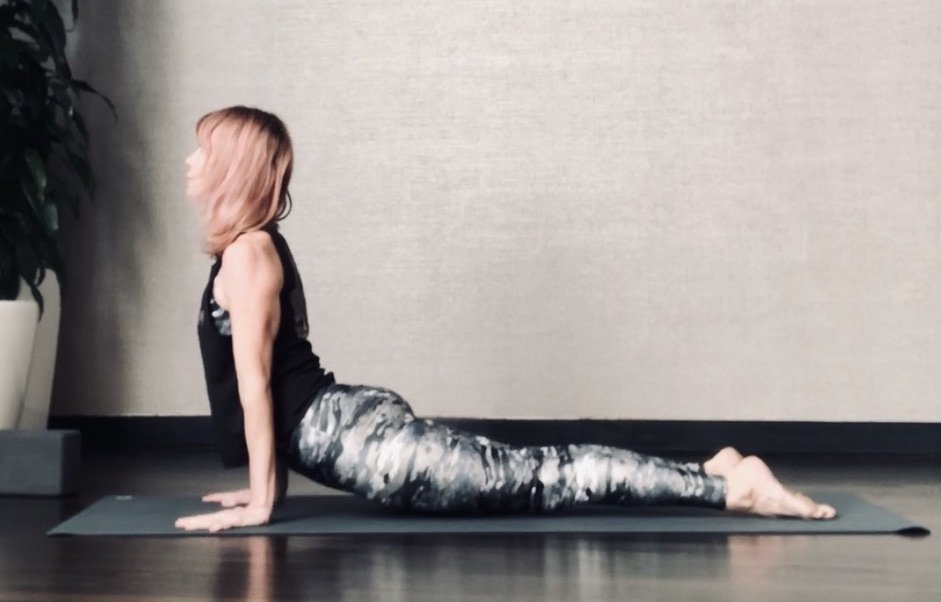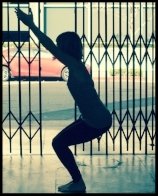Ayurveda: Kapha Dosha
Kapha Dosha - the Ayurveda constitution borne of earth and water.
Ayurveda and Kapha Dosha
Ayurveda (“science of life” in Sanskrit) is an ancient healing system that originated from India over 3000 years ago. It is a holistic, individualized practice that uses diet, herbs, yoga postures, pranayama, and meditation to maintain health and prevent disease. Yoga and Ayurveda are sister sciences, rooted in the Vedic tradition.
There are three Doshas that compose our individual constitutions:
Kapha (earth/water)
This blog deep dives into Kapha.
Kapha Dosha Characteristics
“That Which Binds Things”
Slow and calm.
Sturdier body type with solid joints.
Bright, moist skin.
Compassionate and easy-going.
Empathetic and patient.
Depression and lower energy.
Easy weight gain.
Moist/damp skin disorders and conditions.
Attachment.
Resistant to change.
Prone to melancholy.
A kapha-dominant person benefits from regular exercise, regular routines, and avoiding naps. Generally, all six tastes (sweet, sour, salty, pungent, bitter, and astringent) are recommended for optimal digestion. Foods that are considered great for balancing kapha are pungent, bitter, and asringent; and a lighter diet with dry, warm food and beverages.
Earth is Kapha. The steadiness of mountains represents Kapha.
Kapha Dosha in Balance
Contentment
Steadiness
Inner strength
Trustworthy
Loyal
Tolerant
Slower-paced
Neutral temperature (hands/feet may be cool/clammy)
Good sleep
Lubrication
Good memory
Robust physiology
Imbalanced Kapha Dosha
Depression
Low energy, inertia, foggy mind
Stubbornness
Easy weight gain, tendency for emotional eating
Jealousy, greed
Living in the past
Resistance to change
Excessive napping, difficulty waking
Chills, clammy skin, skin tags, cysts
Excessive mucous, flus, colds, congestion
Constipation
Edema
In Ayurveda, opposites heal.
Attributes of Kapha Dosha
Wet or Liquid
Sticky
Cool
Slow, Immovable
Dense, Heavy
Gross (as opposed to subtle)
Soft or Hard
Steady or Static
Food/Drink to Balance Kapha
Kapha benefits from foods that are warm, light, dry, and lightly spiced.
If you tolerate dairy, avoid heavy/fatty/cold products. Use: kefir, yogurt (in moderation), lassi, buttermilk, lower fat milk (warmed, in moderation), and goat cheese (in moderation), minimize other cheeses; use lighter oils and fats like ghee (in moderation), sunflower oil, olive oil (in moderation) and corn oil.
Use honey, jaggery (caramelized sugar cane syrup), rice syrup (in moderation), and stevia (in moderation) for sweetening.
Drink room temperature water or warm water with a bit of ginger, lemon, and honey; coffee (in moderation), black tea, hot and spicy warming teas such as ginger, cinnamon, black pepper, clove, fennel, orange peel, and chai; kombucha. Avoid alcohol with bubbles or that is sweet or sour; a dry red or white wine is best for kapha, and not to excess.
Eat veggies/fruits like brassicas (mustard greens, collard greens, bok choy, Brussels sprouts, cauliflower, broccoli, radish), sprouts, okra, cucumber, celery, artichoke, fennel, green beans, eggplant, mushrooms, onion, peppers, ginger, apple, pear, cranberry, pomegranate, orange, apricot, cherry, raspberries, rhubarb, watermelon, kiwi, lemon, dried fruits
Almonds (peeled and soaked), sunflower seeds, sesame seeds, pumpkin seeds, flax seed, chia seed, popcorn; black beans, lentils, mung beans, pinto beans, adzuki beans
Use grains like wild rice, high quality basmati rice, dry oats (e.g. muesli), corn, millet, buckwheat, rye
Avoid or consume in moderation the following: foods sweet, sour, and salty. Avocado, sweet potato, pumpkin, tomato, banana, cantaloupe, coconut, dates, figs (fresh), grapes (green), grapefruit, melons, papaya, pineapple, plums, rhubarb; sweet fruit juices, coconut water, aloe vera water, sweet drinks, iced drinks; refined sugar; coconut, pine nut, sesame seeds, peanuts, all nuts except almonds (peeled and soaked); cold milk and hard cheeses; rice (in moderation) wheat, cooked oats, yeasted breads; butter, olive oil, sesame oil, avocado oil
Egg whites (in moderation), venison, chicken and other poultry, fish (fresh and salt water), seafood.
Use herbs to warm the digestion: black pepper, cumin, cinnamon, cardamom, cloves, ginger, and turmeric.
In general, from a dietary perspective, many of the fruits/veggies on the "avoid" list are nutritious and delicious. In Ayurveda, opposites balance things out. Consider that in your overall meal. (I’m predominantly Vata, but I generally start my day with a coffee or Assam black tea - which is on the “avoid” list for me. Would I be better served by other things? Probably. I like it. I add whole warm milk to balance it out (good for vata), and the coffees and teas I buy aren’t terribly astringent, which is a quality I optimally avoid.) I am motivated to consider my dosha because I feel better.
This is general information and not a recommendation or individualized plan. Always consult a doctor before making changes to your diet or lifestyle.
12 Yoga Poses to Soothe Kapha
Mountain Pose (Tadasana) to Standing Forward Bend Variation (Uttanasana Variation) - Stand with your feet parallel and slightly apart. Ears, shoulders, hips, knees, ankles are in line, as shown to left. Move some weight into your heels. Rotate your arm bones outward as you keep them at your sides. Hold for 5-10 breaths.
- From Tadasana, softly bend your knees and hinge forward from your hips until your torso is parallel to the floor. Place your fingertips on your lower legs. Elongate your upper back and reach your chest forward. If your hamstrings are tight, bend the knees more until you get length in the upper back. (The pose on the right would benefit from a slight knee bend to allow for the natural inward curve of the low back.) Press strongly through your legs and four corners of your feet. Draw the shoulder blades back toward the hips as you gaze slightly forward. After five breaths, if your spine is OK with this, fold all the , changing the crossing of the arms hallway through. Hold for 10 breaths.
Downward Facing Dog (Adho Mukha Savasana) - From Standing Forward Fold, bend your knees and place your hands on the ground. Walk your hands forward into Down Dog. The creases of your wrists will be parallel with the front of your mat or turned out slightly. Your shoulders may like being in more of a slight “V” than parallel. Roll your inner arms forward and your outer arms back. Push the ground away and soften tension around your neck. Bend your knees enough to bring a slight inward curve to your low back, as you press your thighs back. Your heels likely will be off the floor. Press the heels back as you lengthen your toes forward. Stay 5-10 breaths.
Plank Pose (Phalakasana) - From Down Dog, rock forward with your shoulders in line with your wrists, toes tucked. Push the ground away and press through the mound of your index fingers to take pressure out of your wrists. Soften your shoulders away from your ears. Lengthen your tailbone toward your heels. Try not to lift or dump your bum - maintain a line from crown to tail to heels. Your core will be strongly engaged. Allow your breath to spread outward to your lateral ribcage, when you exhale your abdominals draw to the midline. Feel free to place your knees on the ground (but stay in a plank, try not to shift to a table shape.) Stay 5-8 breaths. Lower to the floor and rest or come to Upward Facing Dog.
Upward Facing Dog (Urdhva Mukha Savasana) - From hands and knees, move your knees slightly out to each side, bringing your big toes together behind you. Sit back toward your heels, and reach your arms out in front of you along the floor. Keep the arms active or rest them. If your bum is in the air, place a folded blanket underneath. If the crown of your head dips toward the floor, rest your forehead on a block. If your ankles bother you, roll a towel and place it on the floor under the front of the ankles for support. Stay 10 breaths.
Chair Pose (Utkatasana) - with your legs close together. Roll the very top of your inner thighs slightly back Reach your arms alongside your body, palms up, and lift them toward the ceiling. Keep your shoulder blades drawing down the back. Lift your forehead, nose, shoulders and chest, extending your upper back. Your abdominals stabilize your lower back. Breathe into your upper ribs. Stay 5-8 breaths.
Tree Pose (Vrksasana) - Come to Tadasana. Ground your left foot and bring the sole of your right foot to your upper left thigh or left inner calf. Heel points up toward the groin, and toes point down toward the ground. Evenly press the four corners of the left foot into the right leg, keeping your pelvic as level as possible and facing forward. Place your palms together, hands at your heart, in Anjali Mudra. Hold for 5-10 breaths. Repeat on the other side. If your balance is challenged, do the pose at a wall or next to a chair, which you can use as support.
Warrior 3 (Virabhadrasana 3) - From Mountain Pose come to Standing Forward Fold Variation (above), place your fingertips on the ground (or blocks) underneath your shoulders. Transfer your weight into your left leg, press through the four corners of each foot. Keep your pelvis level as you lift the right leg up behind you, heel level with your hip. Flex your ankle and use your inner thigh to help you lift. Roll the right outer hip down to keep your pelvis level. Keep hands on the ground, or bring them to your heart in prayer position, or take them out to the sides like airplane wings. Stay 5 breaths. Bend the left knee slightly as you come back to starting position. Change sides. Finish in Mountain Pose.
Warrior 2 (Virabhadrasana 2) - Stand in Mountain Pose facing the long edge of your mat. Step your legs out wide. Turn your feet parallel and bring your hands to your hips. Bend your right knee slightly and rotate your right leg to the right. Your right knee and toes will now face the short end of your mat. Turn your back toes in slightly, so your back hip, knees and toes are in line. Inhale and reach your arms out to the side. Exhale and bend your right knee, tracking it down the center of your foot. Left your chest, reach your arms so you feel the connection to your back, and let go of tension in your neck. Turn to look past the center of your right hand. Stay for 8 breaths. Straighten your knee and turn your feet parallel. Rest your hands on your hips. Repeat on other side.
Boat Pose (Navasana) - Sit with your knees bent, feet on the floor. Lean back so you are perched in the space between your Sitz bones and tail bone. (Sit on a folded blanket if your tail bone hurts.) Place your hands behind you on the ground. Roll your shoulders down your back, lift your chest, and extend your spine. Keeping that lift and length, with your core engaged because you are leaning back, take your hands to your outer thighs. Keeping your chest lifted, lift the legs off the ground, bringing the lower legs parallel to the floor. It’s as if you have yogic marionette strings lifting your chest and thighs. Once you build a solid foundation here (keep your spine from collapsing), explore straightening your knees, as in the picture. Stay for 5 breaths. Repeat twice more.
Bridge Pose (Setu Bandhasana) - Lie on your back with knees bent and feet on the floor. Place your feet hips’ distance apart and under the knees. Press the four corners of your feet into the floor to lift your pelvis away from the floor. Roll your shoulders underneath you (lean left and roll your right shoulder underneath, lean right and roll your left shoulder underneath). Keep your arms alongside your body, hands down. Lift your breastbone, draw your chin slightly away from your chest. Tailbone lengthens to the back of your knees. Stay 5-8 breaths. Inhale take your arms overhead toward the floor, exhale roll down. Lower your arms. Do 1-2 more cycles.
Revolved Abdominal Pose Variation (Jithara Parivartanasana variation) - Lie on your back with your knees bent and your feet on the floor. Stretch your arms straight out to the sides like a "T". Draw your shoulder blades down your back and bring your middle upper back to the floor. This engages your upper core. Bring your knees into your chest. Hug the inner thighs together, and keep your knees in line. Inhale as you drop your knees halfway to the left and hold there. Stay for 5 breaths. Your right shoulder blade stays grounded. Inhale as you bring the knees back up to center. Exhale as you drop your knees halfway over to the right. Keep your left shoulder blade grounded. Stay 5 breaths. Bring the legs up. Hug the legs in for three breaths. Come to Savasana.
Savasana (Corpse Pose) - Lie on your mat, a blanket, or carpet. Make sure you are warm. Turn your palms toward the ceiling and deeply relax your entire body, from the crown of your head, to your fingers and toes. Inhale to a count of 6, exhale to a count of eight. Stay for 5-15 minutes.
Pranayama for Kapha
Victorious Breath (Ujjayi Pranayama) - Do this pranayama seated, lying on your back with a blanket rolled under your knees, or on your back with knees bent and feet on the floor. This is a form of diaphragmatic breathing but with an addition. Place the tip of your tongue easily on the upper palate behind the upper front teeth. Maintain a relaxed jaw, shoulders, and neck. Instead of silently breathing in and out your nose, softly draw back the upper palate to create a soft sound from the throat with each inhale and exhale - somewhat like the sound of a seashell. This becomes a point of focus. With the soft restriction in the throat - like breathing in and out a straw - inhale to a count of 4-6, exhale to that same count. There is no gripping or tension, and this may take some practice. 8-12 breaths or 2-5 minutes (set a timer that has a gentle chime).
Skull Shining Breath (Kapalabhati Pranayama) - (Not recommended during pregnancy, with high blood pressure, seizure disorders, and more) Come to a seated position, perhaps sitting on blankets, hands on thighs. Breathing through your nose, notice the expansion of your belly and ribs when you inhale and the contraction of the abdomen when you exhale. Feel the motion of your belly under your navel. During this pranayama, you will make short, sharp exhales through your nose. A shallow inhale naturally will follow - don’t force it. Center yourself. Inhale halfway, then quickly expel air from the nose. It’s like the area under your navel gives a little yogic punch toward the back of the body. Continue this repeated expulsion for 30-60 seconds. Set your own pace. Then take a couple recovery breaths. Repeat.
Meditations for Kapha
Walking Meditation - Consider where your thoughts are when you walk. Perhaps on your “to do” list, an event you were not invited to, a conversation with a friend, work. We tend to be on auto-pilot when we walk, immersed in thought, distracted by music or a podcast, or in conversation with a companion. Walking meditation involves conscious presence when you walk, and it can incorporate seated meditation as well. You can do this in your neighborhood, in the city, at a park, in nature, even in your home. Wherever it is - you practice being present and truly noticing your actions and path. When your mind wanders - like any meditation - you bring it back to the task at hand.
During the walking portion, pay attention to the rhythm of your stride.
While walking, you can pay attention to the rhythms of the inhales and exhales of your breath.
While walking, you can consciously observe details of your surrounding. When we truly pay attention, we often see things we never previously have noticed.
If you find a place to sit, and you choose to, take a couple minutes to watch your breath. Feel the temperature and quality of the air or pay attention to the sounds around you.
Affirmation: “I embrace change.” “I try new things.” “I say Yes to myself.”
Lifestyle Activities that Support Kapha
Warm bath - add a couple tablespoons of sesame oil or almond oil in a warm bath. Be careful getting out and wipe out the tub after because it gets slippery.
Essential Oil - Use uplifting essential oils like rosemary, geranium, and jasmine in your bath or in a diffuser.
Lifestyle - Take a brisk walk, hike, or a vigorous yoga practice before 10am; it’s OK to say, “No”; vary your routine; skip naps.
Skin Care - Give yourself a daily sesame or almond oil self-massage with stimulating essential oils like eucalyptus and rosemary.
Basic Ayurveda is a wellness tool in my kit. If you want to try it, explore, take small steps, observe how you feel, and adjust. Like anything, you can worry too much about doing it right or wrong (vata), try to control it and be perfect (pitta), or find it tiring to exert any energy toward it (kapha). Like most things, balance in the middle generally is optimal.
Don’t make any major lifestyle changes without consulting your doctor. To further implement in your life, please see a trained Ayurvedic practitioner.
About The Author
Gwen Yeager is an LA-based yoga expert who loves helping people deepen their practice in practical ways that work with real-life (she’s also a cancer survivor and mother of twins). She provides her students with resources to incorporate healthy movement, breathwork, and mindfulness into every nook and cranny of living. While her teaching style is down-to-earth and approachable — she’s a stickler about the science movement and proper anatomical alignment because nothing is more important than long-term mobility and a vibrant quality of life!























